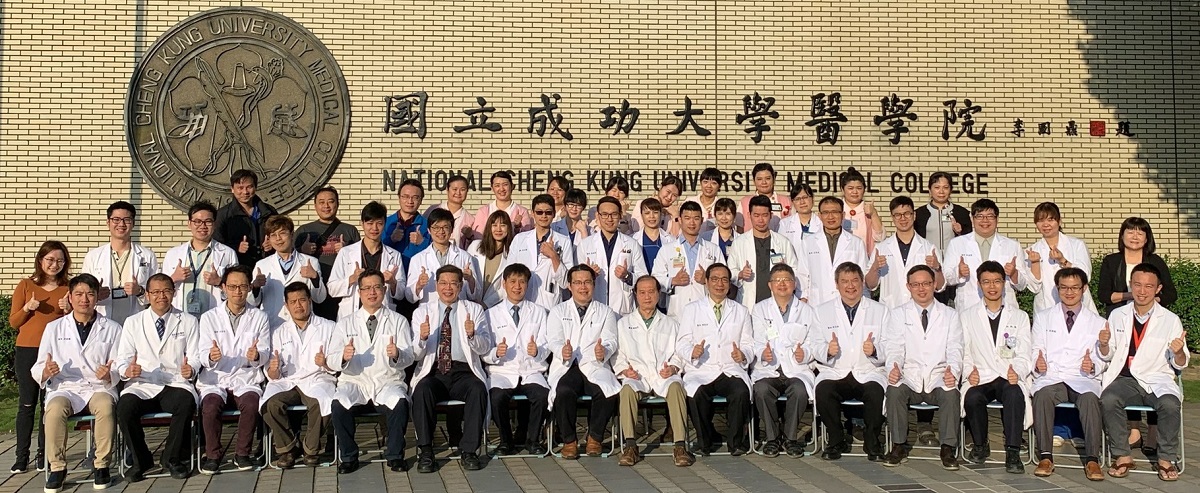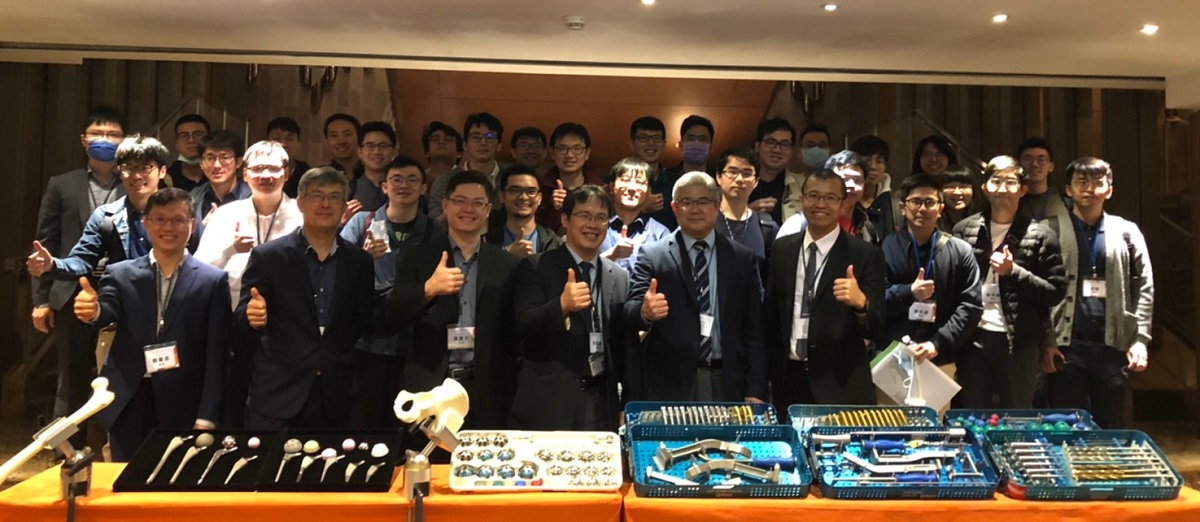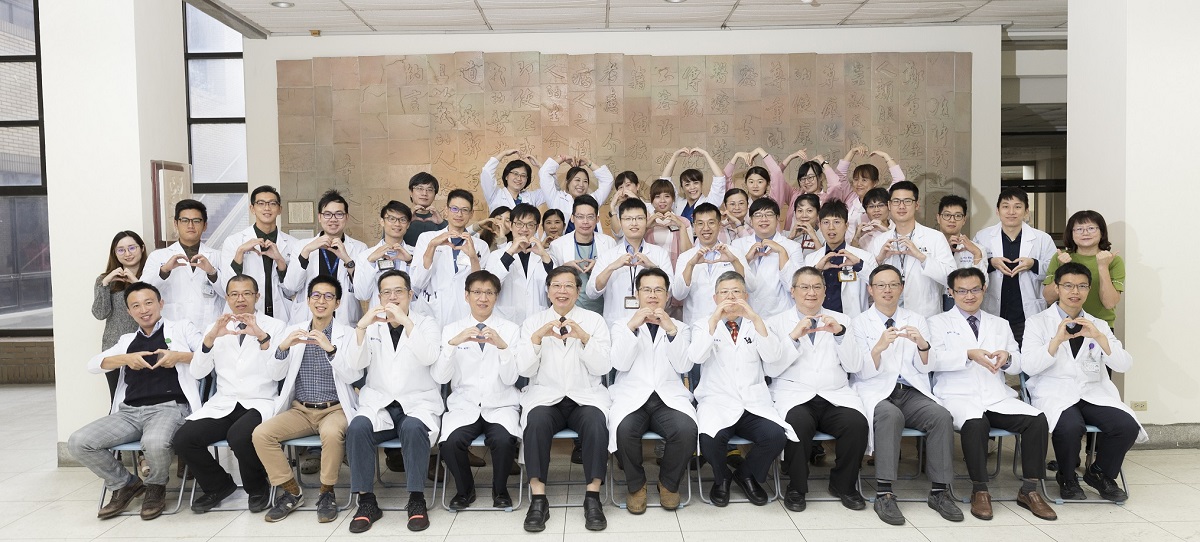Resident Physician Training Program
Resident Physician Training Program
I. Brief Introduction to the Department
The department was established in June 1988, when the National Cheng Kung University Hospital (hereinafter NCKUH) was officially inaugurated, a move highlighting the significance of sports orthopedics as a professional discipline in modern medicine. At its initial stage, the department was staffed with only three instructors from the College of Medicine, who doubled as attendant physicians in the hospital. They managed to overcome all difficulties in an effort to lay a solid foundation for orthopedic education, research and clinical service in the department as well as in southern Taiwan.
Now the department has expanded its staff with seven attendant physicians and thirteen resident physicians. All of them are outstanding in their clinical performance and contributions to the financial growth of the hospital.
Besides medical service, the department shoulders the responsibilities for resident physician internship, clinical instruction, and orthopedics-related research in order to elevate Taiwan’s medical service and research on orthopedics to world-class status. Therefore, the physicians of the department endeavor to engage in clinical service, medical research and clinical instruction with a strong presence in the discipline of orthopedics domestically and internationally. Their efforts have paid off, as evidenced by the fact that our resident physicians always pass the annual specialist physician examination and are ranked at the top of the list.
The department has consolidated its place in southern Taiwan as a leading institute of orthopedics with world-class research and clinical service since its establishment in 1988. As the department is mainly intended to treat bone and muscle diseases, its operation and service are closely related to the research and development of biological mechanics, biomaterials and interior implantation, which are being investigated on campus at the engineering-originated National Cheng Kung
University. In terms of clinical performance, research and teaching, the department is no less outstanding than its counterpart at National Taiwan University Hospital. For instance, considering its subspecialties, the department plays a leading role in Taiwan and enjoys a worldwide reputation.
As far as its staff are concerned, the department of orthopedics maintains a desirable working environment with the lowest number of resignations at NCKUH. In the following three to four years, the department will continue to recruit into its staff the young elites of orthopedics, who are expected to develop personally and professionally over the next decade.
(1) Organizational Structure
The Department of Orthopedics consists of four divisions and one laboratory—General Orthopedics, Sports Medicine, Spine, Pediatric Orthopedics, and the Orthopedics Research Laboratory.
(2) Staff
The department is staffed with one department director, four division directors, seven attendant physicians, thirteen resident physicians, one technician, one secretary, and two physician assistants.
II. Objectives
This program aims to provide resident physicians, intern physicians, trainee doctors and medical students with professional training and knowledge of orthopedics by means of instruction in various subspecialties using the facilities in the department, outpatient and ward clinical services, and laboratory research. Upon completion of the project, resident physicians will become independently competent physicians of orthopedics while intern physicians and medical students will have a better understanding of orthopedics.
“Orthopedics” is not sufficient as a term to cover all aspects of the work the department does, and the term “medical science of sports systems” can more truly represent this.
The educational objectives the department sets itself with regard to medical students are to introduce them to the following:
1. Basic knowledge of the human movement organ system, concerning the structures, physiology and mechanics of bones, joints, muscles, cartilage, tendon, ligament, peripheral nerves and soft tissue.
2. The common diseases and pathogenic mechanisms of the movement organs.
3. Clinical diagnostics.
4. Clinical treatment.
The educational objectives the department sets itself with regard to resident physicians are as follows:
1. To enhance their basic knowledge concerning movement organs.
2. To instruct them in the course of clinical diagnosis.
3. To instruct them in the course of medical treatment.
4. To involve them in the academic and educational activities in the department, including reading textbooks and journals, case discussion, educational lectures and model operation.
5. To involve them in domestic and international academic activities.
With regard to physicians-in-training from other hospitals, the educational objective is to train them to become physicians of various subspecialties of orthopedics.
III. Subjects
The subjects of this training project are individuals who have been selected by the department as resident physicians of orthopedics are. A physician of good character, male or female, who is interested in orthopedics, who has graduated from any MOE-accredited medical college in Taiwan and abroad, and who holds a license as an ROC physician, is eligible to apply for the project.
IV. Duration
This program will be implemented for a five-year duration, during which the performance of each trainee shall be regularly assessed to decide whether he/she should proceed with the training. The department will hold a meeting to discuss the promotion of a participant, which will be confirmed by the College of Medicine.
V. Contents
Based on the regulations governing the training of resident physicians, this program will be implemented in five years with basic training of surgery in the first year and professional training from the second year.
VI. Training Specification
1. First Year:
The program is focused on basic surgical training, including an introduction to surgery, germ-free techniques, basic surgical techniques, surgical patient medical care, general surgery, neurosurgery, plastic surgery, pediatric surgery, general surgical outpatient treatment, basic training in anesthesia and virtual orthopedic surgery training. It aims to enable trainees to acquire a comprehensive understanding of surgery and get acquainted with basic surgical techniques.
2. Second Year:
Resident physicians receive basic knowledge and technique training in orthopedics, including orthopedic patient medical history checkup, general and specific physical checkup, treatment of patients before and after an operation, plaster bandage treatment, skeletal and skin traction, basic techniques in orthopedics, treatment of patient of orthopedic surgery, and subspecialties of orthopedics. Meanwhile, they are required to discuss medical cases of orthopedics, inspect wards, and attend literature review conferences on a regular basis. The program in the second year aims to have resident physicians acquire a basic understanding of orthopedics and learn to manage patients of orthopedic surgery in the intensive care unit and the emergency room.
3. Third and Fourth Years:
Resident physicians are trained to study professional knowledge and skills in orthopedics as well as professional training and clinical research techniques in subspecialties, including wrist surgery, sports injury, biomechanics, spine orthopedics, bone disease, bone tumor, trauma surgery, pediatric orthopedics, and microsurgery. A resident physician can choose a research topic under the guidance of the supervising doctor to conduct experiments or research on animals as a basic training requirement for microsurgery.
4. Fifth Year:
Resident physicians complete the program this year to become a physician of orthopedics, and will act as the first assistant in orthopedic surgery. Under the instruction of the supervising doctor, a resident physician can perform an operation, and under the instruction of the attendant physician on duty for the month, a resident physician can treat an emergency orthopedic patient case. The program in the fifth year is intended to train a resident physician with a good command of surgical judgments and techniques and a further understanding of all subspecialties in the department. Meanwhile, a resident physician will help the department to do administrative work, arrange operations and supervise junior resident physicians.
VII. Teaching Activities
Resident physicians learn orthopedic skills and experiences from their service in wards, operating rooms and outpatient units. They can further intensify their study and absorption of knowledge and clinical experiences through various kinds of conferences. Major teaching activities are described as follows:
(1) Operations:
Orthopedic operations are scheduled for Monday, Tuesday, Wednesday and Thursday, which resident physicians can observe to get acquainted with surgical skills and instruments.
(2) Plaster Bandage Treatment:
Patients are scheduled to receive plaster bandage treatments in the morning on Tuesday and Thursday when resident physicians can learn plaster bandage skills.
(3) Outpatient Services:
General outpatient services are scheduled two to three times every day from Monday through Saturday. Special outpatient services are scheduled for Monday and Friday, including peripheral nerves and wrists, senile orthopedics, artificial joints, pediatric orthopedics, knee joints and sport injury, scoliosis and spinal degradation, and identification. Resident physicians are able to acquire clinical experiences through their personal involvement in the services.
(4) Medical Conferences:
A conference is scheduled for every Monday morning from 7:30 to 8:30 for resident physicians to present their reports on a just-completed operation and discuss their plans for a scheduled operation.
(5) Lectures by Intern Physicians and Trainee Doctors:
Intern physicians and trainee doctors are scheduled to give lectures in English on Wednesday morning from 7:30 to 8:30.
(6) Subspecialty Conference:
A subspecialty conference is scheduled for Tuesday morning from 7:30 to 8:30 for resident physicians to make reports on journal and literature review, followed by comments from attendant physicians.
(7) Book Reading:
A book reading session is scheduled for Thursday morning from 7:30 to 8:30 for resident physicians to report on their reading progress.
(8) Academic Lectures (including mortality conference, morbidity conferences, case conferences, and invited speeches):
An academic lecture session is scheduled for Friday morning from7:30 to 8:30 for resident physicians or invited speakers to deliver academic lectures.
(9) Overall Review of Medical Records during Ward Inspection
Every day, an attendant physician administers an overall review of medical records of inpatients and surgical patients for the week during a ward inspection.
(10) Orthopedics Annual Meetings:
Fellow orthopedic physicians gather at national and local orthopedics annual meetings to exchange clinical and personal experiences.
(11) Orthopedics-related Research:
Every resident physician is required to conduct research at the Graduate Institute of Biomechanical Engineering for a span of three months to half a year. At the end of research, every resident physician should submit a research report and thesis.
(12) Specialty Lectures by Attendant Physicians, Experts and Scholars:
In addition to required and elective courses, medical students and resident physicians are scheduled to attend specialty lectures by attendant physicians, and experts and scholars from Taiwan and abroad.
VIII. Evaluation
Resident physicians shall perform their study and work under the supervision of the chair, attendant physicians and fifth-year resident physicians. They will be evaluated by the chair and all attendant physicians once every three months. The evaluation criteria include medical knowledge and professional learning (15%), issue-oriented learning (15%), interpersonal relationship and communication skills (20%), patient healthcare (20%), medical business administration (30%) and other items (extra credits, 10%).
IX. Development Plan
The Department of Orthopedics will follow two directions, both inward and outward, to develop in the next five years. It will enhance its research capability in its inward development and integrate its work with rehabilitation, physical therapy and occupational therapy for the establishment of the Musculoskeletal Research Center or Locomotion Research Center in its outward development.
A: Inward
1. The department will invite prestigious international professors, two every year and each for three month, as visiting scholars to guide research and establish regular mutual exchange channels.
2. The department aims to increase its staff, space and facilities.
B. Outward
The Musculoskeletal Research Center or Locomotion Research Center, composed of orthopedics, rehabilitation, physical therapy and occupational therapy, will work on the development of single window clinical service and forward-looking collective research. The center is expected to hold joint research and academic forums.
X. Evaluation Table
NCKUHO Evaluation Table for Resident Physicians
Name: Date of Evaluation:
Description Rating
1. Medical knowledge and professional learning (15%)
Disease analysis Excellent Good Fair Poor
Basic medical knowledge application Excellent Good Fair Poor
Number of conferences or workshops attended
(morning conferences and classes) 3~5 2~4 1~2 0
2. Issue-oriented learning (15%)
Problem discovery, problem shooting and case application Excellent Good Fair Poor
Scientific research, evaluation and statistics Excellent Good Fair Poor
Number of conference or journal papers published each quarter (case conferences and morbidity) >3 2 1 0
3. Interpersonal relationship and communication skills (20%)
Communication with patients and their family members in a good patient-doctor relationship Excellent Good Fair Poor
Peer relationship Excellent Good Fair Poor
4. Patient healthcare (20%)
Optimal and comprehensive plan for medical treatments Excellent Good Fair Poor
Empathic performance and disease state interpretability Excellent Good Fair Poor
5. Medical business administration (30%)
Completing the instructions and assignments by attendant physicians Excellent Good Fair Poor
Understanding of the interactions between the department and other units (coordination, contact and responsibilities) Excellent Good Fair Poor
Medical record writing progress >80% 70~80% 50~60% <40%
6. Other items (extra credits, 10%)
Teaching enthusiasm with new physicians and students Excellent Good Fair Poor
Conclusion:



